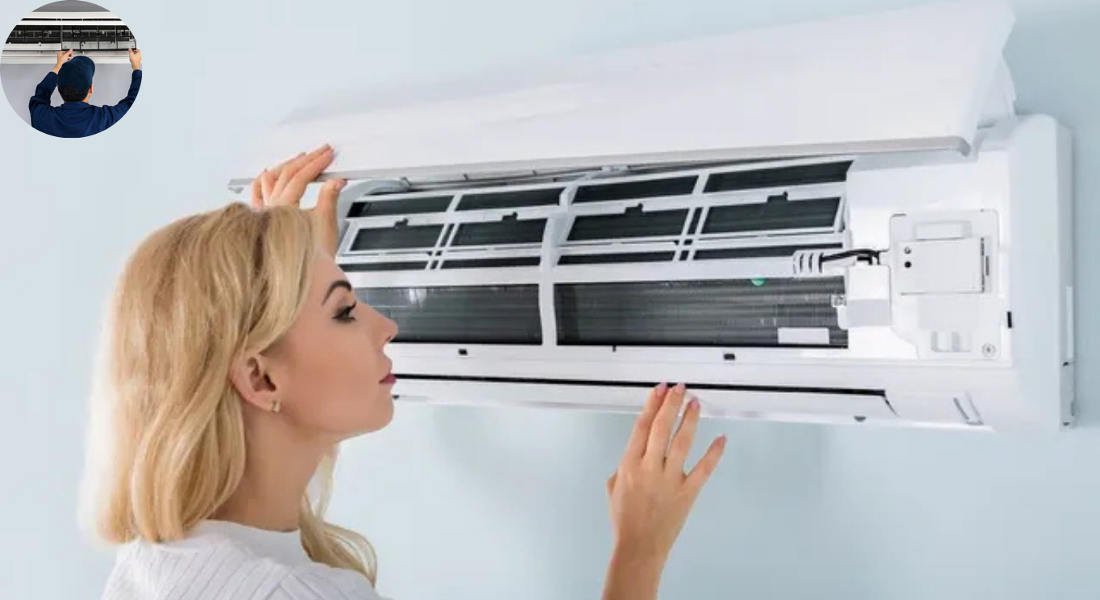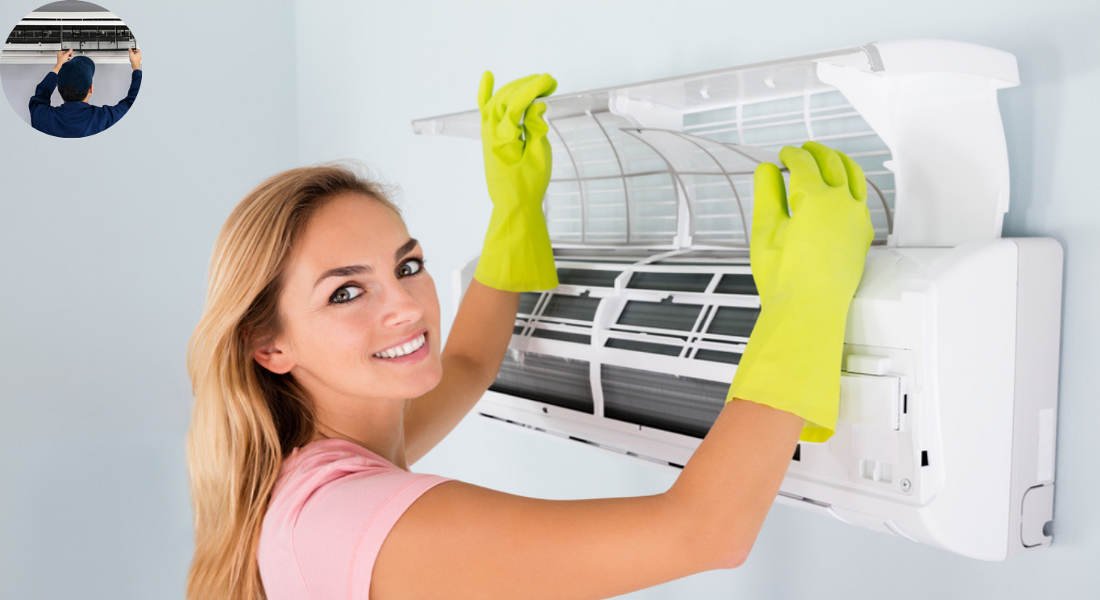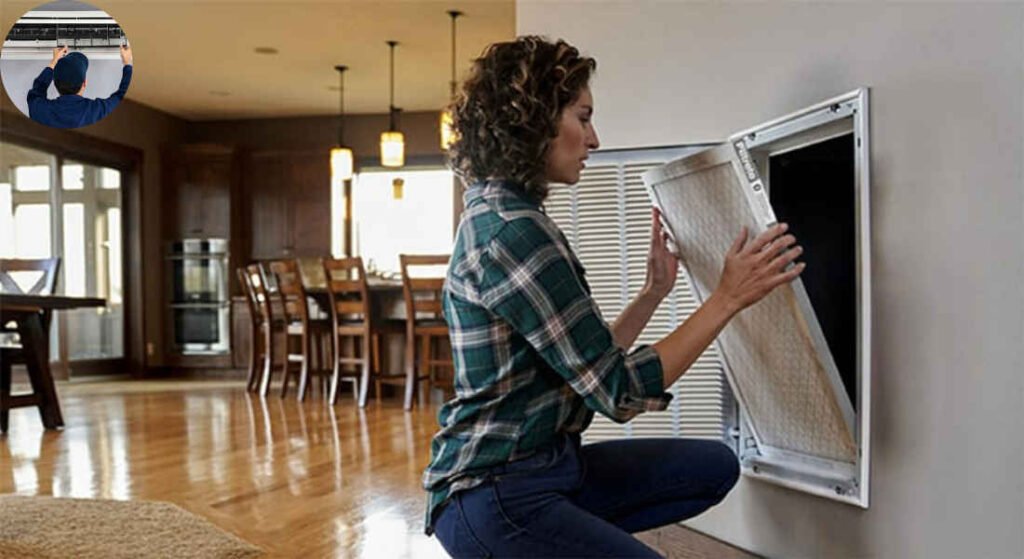Changing your air filter is a simple yet essential task that can significantly improve your home’s cooling efficiency and indoor air quality. A clean air filter helps your HVAC system run smoothly by allowing better airflow, reducing dust buildup, and preventing the system from working harder than necessary. This not only keeps your home cooler but also extends the lifespan of your equipment and lowers energy costs. In this guide, you’ll learn straightforward steps to locate, remove, and replace your air filter correctly, ensuring your home stays comfortable and cool all season long.
The Importance of Air Filters in the Home
Air filters are often the unsung heroes of home comfort. They trap dust, allergens, and other particles that float in the air, ensuring you breathe easier. A clean filter not only improves air quality but also makes your living space healthier.
When they’re clogged with dirt and debris, your heating or cooling system has to work harder to maintain the desired temperature. Higher energy bills and premature equipment wear can result from this extra strain.
By keeping airflow unobstructed, you support a more efficient system overall. Homeowners should recognize that neglecting this simple task can have significant repercussions for both comfort and costs.
Signs That It’s Time to Change Your Air Filter
An accumulation of dust around your home is a clear indication of a problem.You may need to change your air filter if you notice more dust on surfaces. Airflow is restricted by clogged filters, which makes your HVAC system work harder.
A struggling system consumes more power to maintain temperature, leading to higher costs.
Watch for unusual odors as well. Musty or stale smells can indicate trapped pollutants in the filter. These particles linger and affect indoor air quality.
Frequent allergy symptoms among family members signal trouble too. If sneezing or coughing rises indoors, take a look at that air filter.
Check the filter itself if it looks dirty or discolored; this is an immediate cue that replacement is necessary for better performance and comfort in your home’s environment.
You may also read (key insights on insurance coverage for house fires).
Step-by-Step Guide to Changing Your Air Filter
You can improve the comfort of your home by changing your air filter.Start by locating the filter, usually found in the return air duct or near your furnace.
Once you’ve found it, turn off your HVAC system to ensure safety during the process. Carefully remove the old filter; note how it’s positioned for easier installation of the new one.
Next, check for dirt and debris on both sides of the filter slot. Give it a quick wipe if needed before inserting the new filter. Make sure it fits snugly and follows any directional arrows indicating airflow.
After securing everything back in place, restart your HVAC system. Enjoy that refreshing feeling as improved airflow circulates through your home!
Different Types of Air Filters and Which One is Right for You
When it comes to air filters, variety is key. Each type has its own strengths and weaknesses, catering to different needs.
Fiberglass filters are the most common and budget-friendly. They capture larger particles but may not be effective against allergens or smaller pollutants. If cost is a priority, these could work temporarily.
Pleated filters offer enhanced filtration thanks to their increased surface area. They trap dust, pollen, and pet dander better than fiberglass options while still being affordable.
For those with allergies or respiratory issues, HEPA filters are ideal. They can remove up to 99.97% of airborne particles as small as 0.3 microns but come at a higher price point.
Activated carbon filters excel in odor removal due to their absorbent properties yet don’t filter out particulates effectively on their own.
Consider your needs—whether it’s basic filtration or tackling allergens—to choose wisely among these options for optimal home comfort.
You may also read (does the name on the house impact ownership rights).
How Often Should You Change Your Air Filter?
Changing your air filter regularly is essential for optimal home comfort. But how often should you really do it?
Every month, you should check your air filter.Depending on factors like usage and household conditions, you might need to replace it every one to three months.
It is easy for pet hair and dander to clog filters, reducing airflow and efficiency.
Seasonal changes also play a role. During summer when AC units are working overtime, filters may need more frequent attention.
A good rule of thumb? If your filter looks dirty or clogged, it’s time for a change regardless of the set schedule. Regular maintenance helps ensure better airflow throughout your home while keeping energy costs down too.
Additional Tips for Maintaining a Cool Home
Maintaining a cool home extends beyond just changing your air filter.
First, make sure to seal any gaps in windows and doors. Drafts can let warm air seep in, making it harder for your cooling system to maintain a comfortable temperature. Weather stripping or caulking is an easy fix that pays off significantly.
Consider using ceiling fans strategically. They help circulate cool air and create a wind-chill effect that makes the room feel cooler without needing to drop the thermostat setting too low.
This simple act reduces heat gain from sunlight streaming through windows, helping keep indoor spaces more temperate.
Regular maintenance of your HVAC system is also crucial. Schedule annual inspections with professionals who can ensure everything runs smoothly and efficiently throughout the season.
Consider upgrading your insulation if it’s lacking. Proper insulation keeps conditioned air inside and prevents outdoor heat from creeping in—making it easier for your cooling system to do its job effectively.
Implementing these practices alongside regularly changing your air filter creates an environment that’s not only cooler but also healthier for everyone at home.
You may also read (does house cleaning really count as exercise).

